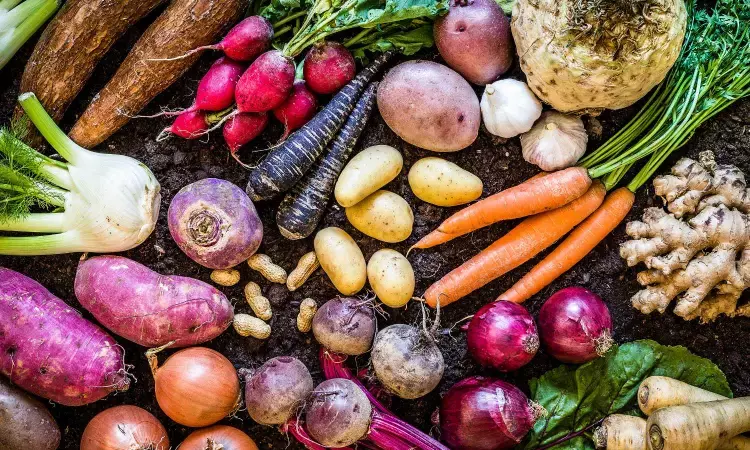- Home
- Medical news & Guidelines
- Anesthesiology
- Cardiology and CTVS
- Critical Care
- Dentistry
- Dermatology
- Diabetes and Endocrinology
- ENT
- Gastroenterology
- Medicine
- Nephrology
- Neurology
- Obstretics-Gynaecology
- Oncology
- Ophthalmology
- Orthopaedics
- Pediatrics-Neonatology
- Psychiatry
- Pulmonology
- Radiology
- Surgery
- Urology
- Laboratory Medicine
- Diet
- Nursing
- Paramedical
- Physiotherapy
- Health news
- Fact Check
- Bone Health Fact Check
- Brain Health Fact Check
- Cancer Related Fact Check
- Child Care Fact Check
- Dental and oral health fact check
- Diabetes and metabolic health fact check
- Diet and Nutrition Fact Check
- Eye and ENT Care Fact Check
- Fitness fact check
- Gut health fact check
- Heart health fact check
- Kidney health fact check
- Medical education fact check
- Men's health fact check
- Respiratory fact check
- Skin and hair care fact check
- Vaccine and Immunization fact check
- Women's health fact check
- AYUSH
- State News
- Andaman and Nicobar Islands
- Andhra Pradesh
- Arunachal Pradesh
- Assam
- Bihar
- Chandigarh
- Chattisgarh
- Dadra and Nagar Haveli
- Daman and Diu
- Delhi
- Goa
- Gujarat
- Haryana
- Himachal Pradesh
- Jammu & Kashmir
- Jharkhand
- Karnataka
- Kerala
- Ladakh
- Lakshadweep
- Madhya Pradesh
- Maharashtra
- Manipur
- Meghalaya
- Mizoram
- Nagaland
- Odisha
- Puducherry
- Punjab
- Rajasthan
- Sikkim
- Tamil Nadu
- Telangana
- Tripura
- Uttar Pradesh
- Uttrakhand
- West Bengal
- Medical Education
- Industry
Anthocyanins in purple vegetables and tubers can reduce diabetes risk: Study

Finland: A new review article published in the Journal of Agricultural and Food Chemistry has shown the increase in the beneficial effect of anthocyanins on type 2 diabetes if anthocyanin is acylated, meaning that an acyl group is added to the sugar moieties of anthocyanin.
The red, purple and blue pigments in fruits, vegetables, and tubers called anthocyanins can reduce the risk of diabetes by affecting energy metabolism, gut microbiota, and inflammation.
A great number of acylated anthocyanins can be found in purple potatoes, sweet potatoes, radishes, purple carrots and red cabbages, whereas bilberries and mulberries contain mostly nonacylated ones anthocyanins. Acylated anthocyanins are poorly absorbed in digestion, but they have probiotic properties and reduce the risk of diabetes more efficiently than nonacylated anthocyanins.
“The studies have shown that, in addition to changing physical and chemical properties, the acylation affects how the anthocyanins are absorbed and metabolised,” says Postdoctoral Researcher Kang Chen at the Food Sciences Unit, University of Turku, Finland.
The acylated anthocyanins are more effective antioxidants than the nonacylated anthocyanins, and they can also improve the intestinal barrier that enables the absorption of necessary nutrients. Furthermore, the acylated anthocyanins maintain gut microbiota homeostasis, suppress pro-inflammatory pathways, and modulate glucose and lipid metabolisms.
“The plant's genotype defines what kind of anthocyanins they produce. In general, purple vegetables contain many acylated anthocyanins. Also, purple potatoes, especially the Finnish variety called ‘Synkeä Sakari’, is abundant in acylated anthocyanins,” says Chen.
Acylated anthocyanins travel through our bodies from the upper gastrointestinal tract to the colon, where the gut microbiota metabolises them. Glucose transporters are involved in anthocyanin absorption, but different glucose transporters are responsible for the absorption of acylated and nonacylated anthocyanins. The acylated and nonacylated anthocyanins also have different impacts on the enzymes involved in metabolism.
“The latest research has shown that the acylated and nonacylated anthocyanins can impact type 2 diabetes in different ways,” Chen summarises.
Reference:
Kang Chen, Maaria Katariina Kortesniemi, Kaisa Marjut Linderborg, and Baoru Yang Journal of Agricultural and Food Chemistry 2023 71 (2), 1002-1017 DOI: 10.1021/acs.jafc.2c05879
Dr Kamal Kant Kohli-MBBS, DTCD- a chest specialist with more than 30 years of practice and a flair for writing clinical articles, Dr Kamal Kant Kohli joined Medical Dialogues as a Chief Editor of Medical News. Besides writing articles, as an editor, he proofreads and verifies all the medical content published on Medical Dialogues including those coming from journals, studies,medical conferences,guidelines etc. Email: drkohli@medicaldialogues.in. Contact no. 011-43720751


